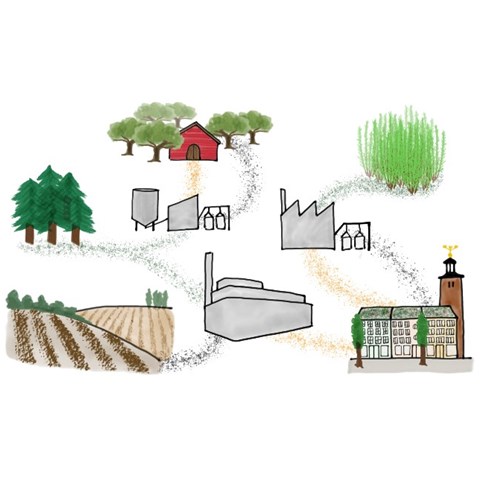Facts:
Keep up to date with the latest biochar news at SLU Biochar network, where you can find information on SLU biochar research and ongoing projects.

Biochar is the carbon rich material produced from biomass which has large potential to provide negative greenhouse gas emissions as a stable carbon stock in soil, alongside other climate and environmental benefits.
Biochar systems are diverse: biochar can be produced from different biomass, in many types of pyrolysis reactors, at different scales, and used in various applications, on all continents. All these possible configurations can lead to very different environmental performances.
Multiple tools are used to analyse biochar systems, such as life cycle assessment (LCA), energy and mass flow analysis, geospatial analysis. We apply these methods to analyse the climate impact, energy and resource efficiency and environmental impacts of different systems where biochar is produced and used.
Our case studies cover biochar production and use in agriculture in Sweden and Kenya, biochar use in onsite wastewater treatment, urban uses of biochar and biochar for treatment of contaminated soils.
Recent work conducted in the biochar systems group has developed a model for estimating the long-term carbon storage potential of biochar in soils. The group has also contributed to a recent spatially explicit global analysis of the carbon storage potential of crop residue biochar production. These contribute to a growing field of research demonstrating the potential of biochar systems to sequester atmospheric carbon.
Potential for biochar carbon sequestration from crop residues
Keep up to date with the latest biochar news at SLU Biochar network, where you can find information on SLU biochar research and ongoing projects.